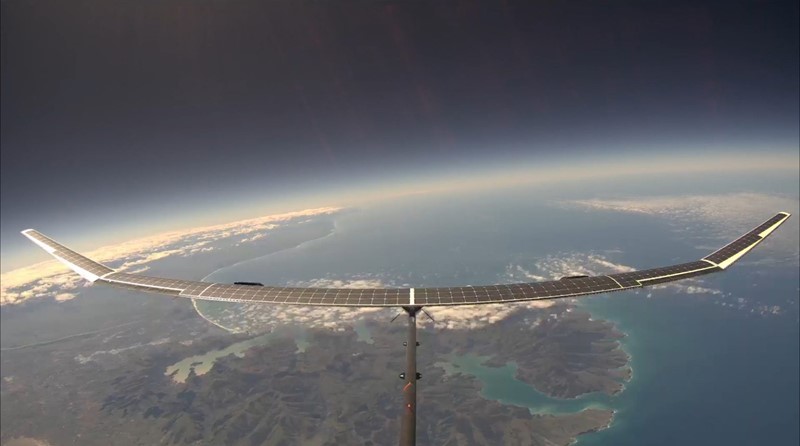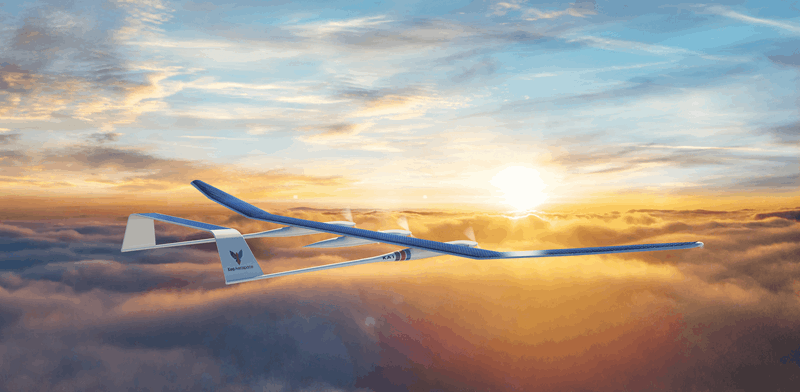Kea Aerospace
Kea Aerospace is a business entirely focused on developing innovative aerospace technology, helping to build Canterbury's aerospace ecosystem in the process.
The company took a significant stride in early 2025 with a successful solar-powered flight to the stratosphere using its Kea Atmos Mk1b UAV. The flight, which took place on 8 February, from the Tāwhaki National Aerospace Centre, reached an altitude of over 56,000 feet. The achievement is a key milestone in Kea's broader mission to advance solar-powered aviation and remote sensing technologies.
The driving force behind the company is Mark Rocket. From co-directing Rocket Lab from 2007 to 2011 to founding and heading Kea Aerospace, Mark has an impressive track record in the Canterbury aerospace industry.

Mark Rocket - CEO of Kea AerospaceThis stratospheric flight puts Kea Aerospace alongside just a handful of other international companies that can achieve solar-powered flight to high altitudes. It’s not an easy enterprise to balance the aerodynamic, power and weight allowances for this type of aircraft, whilst flying in conditions of -50 degrees Celsius with only 10% of the air density we experience at sea level.
With guidance from ThincLab and the advantages of Canterbury’s innovation ecosystem to support them, the Kea Aerospace team has made a vast amount of progress since their inception in 2018.
“They (ThincLab) have assisted us to hone our commercialisation plan, undertake market research, improve our presentations and be a top-notch advisory sounding board.” — Mark Rocket
What makes the Kea Atmos stand out?
There is a data gap in the aerospace industry, with many organisations and businesses lacking the data they need to make informed decisions. Satellites are simply too far away to capture accurate detail, and manned aircrafts are extremely expensive to run and can’t cover much ground.
As the largest unmanned aircraft designed and built in the Southern Hemisphere, the Kea Atmos will overcome these barriers. Flying in the stratosphere at a much closer proximity to Earth for extensive periods of time, allows it to capture accurate data. This opens up a wide range of opportunities for New Zealand, and beyond, in areas such as precision agriculture, disaster management, and environmental monitoring.

Global Collaborations Driving Innovation
The launch of the Kea Atmos Mk1b is part of Kea Aerospace’s ongoing efforts to push the boundaries of remote sensing and environmental monitoring. The company is working with several international partners on projects aimed at advancing technology and supporting global and local environmental efforts.
One notable collaboration is with NASA Ames Research Centre and Jet Propulsion Laboratory (JPL) on the Next-Generation Airborne Remote Sensing: High Altitude Persistent Coastal Ocean Monitoring (HAPCOM) project. Funded by New Zealand's Ministry of Business, Innovation and Employment, the project will test advanced remote sensing systems to monitor New Zealand’s coastal and river regions.
Additionally, Kea Aerospace is partnering with the German Aerospace Centre (DLR) to integrate optical cameras and radar systems onto the Kea Atmos aircraft. This collaboration is aimed at advancing Earth observation capabilities by deploying these systems to the stratosphere.
Local Environmental and Research Impact
Kea Aerospace is also working on local environmental monitoring initiatives, including a collaboration with the Tāwhaki National Aerospace Centre to study atmospheric processes and weather forecasting in the Kaitorete region. Using remote sensing technology onboard the Kea Atmos, the company is gathering critical data to support environmental decision-making in New Zealand.

Future Plans
Looking to the future, Kea Aerospace is planning the Kea Atmos Mk2, a larger UAV designed for multi-month endurance flights. This next generation of aircraft will expand the company’s capabilities and allow it to serve a broader range of commercial and government customers. The company is currently in discussions with investors to support the Mk2’s development.
Mark Rocket says Kea Aerospace has benefited from the support of a healthy ecosystem.
“We feel very fortunate to do our aerospace R&D work in New Zealand, we have been extremely well supported by entities such as the Tāwhaki National Aerospace Centre, Civil Aviation Authority, Airways, Callaghan Innovation, the New Zealand Space Agency and the Ministry of Business, Innovation and Employment.”
With the successful stratospheric flight marking just one chapter in its journey, Kea Aerospace continues to push the boundaries of solar-powered aviation, remote sensing, and environmental monitoring.


